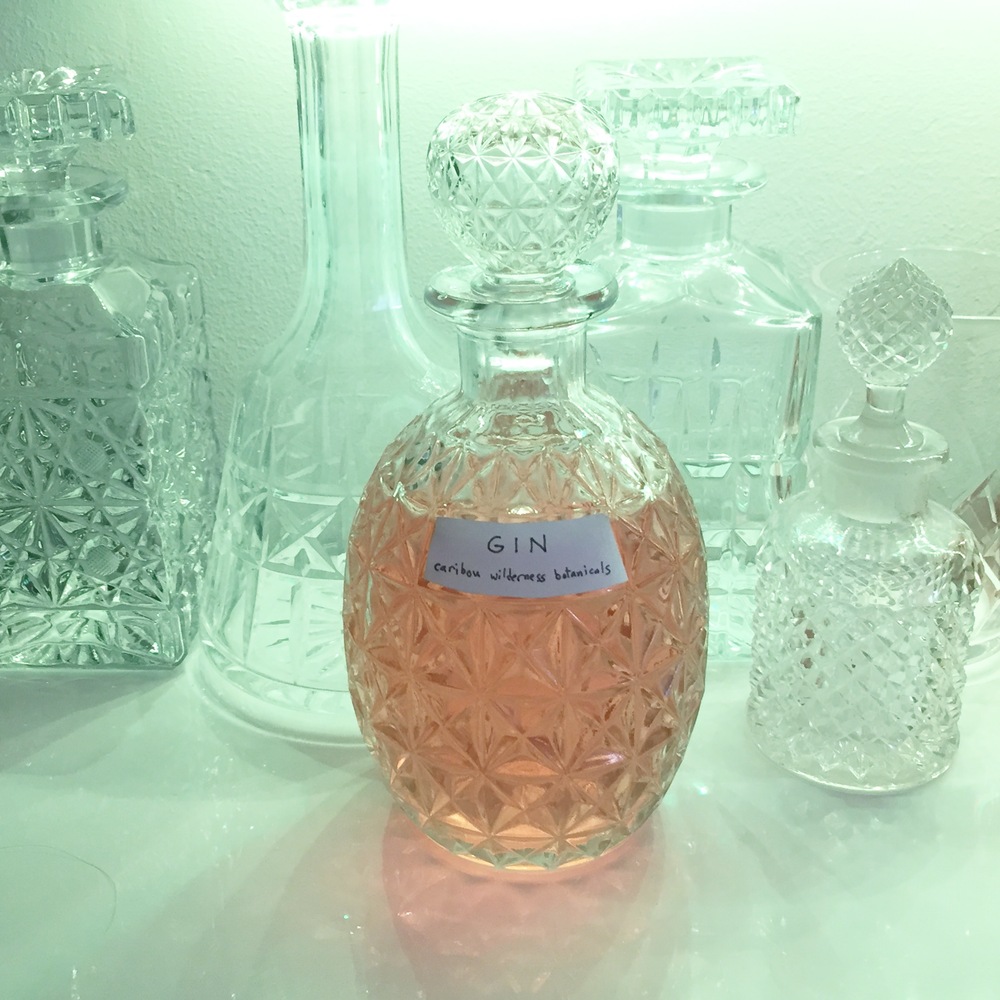This summer we spent 5 days backpacking in and around the stunning Caribou Wilderness.
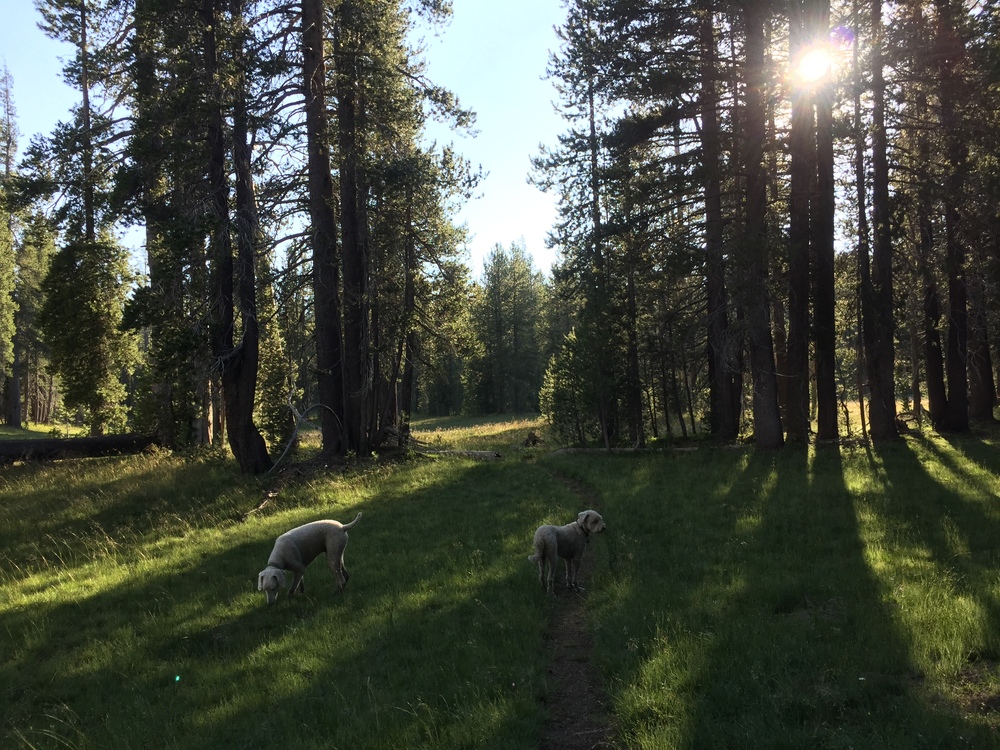
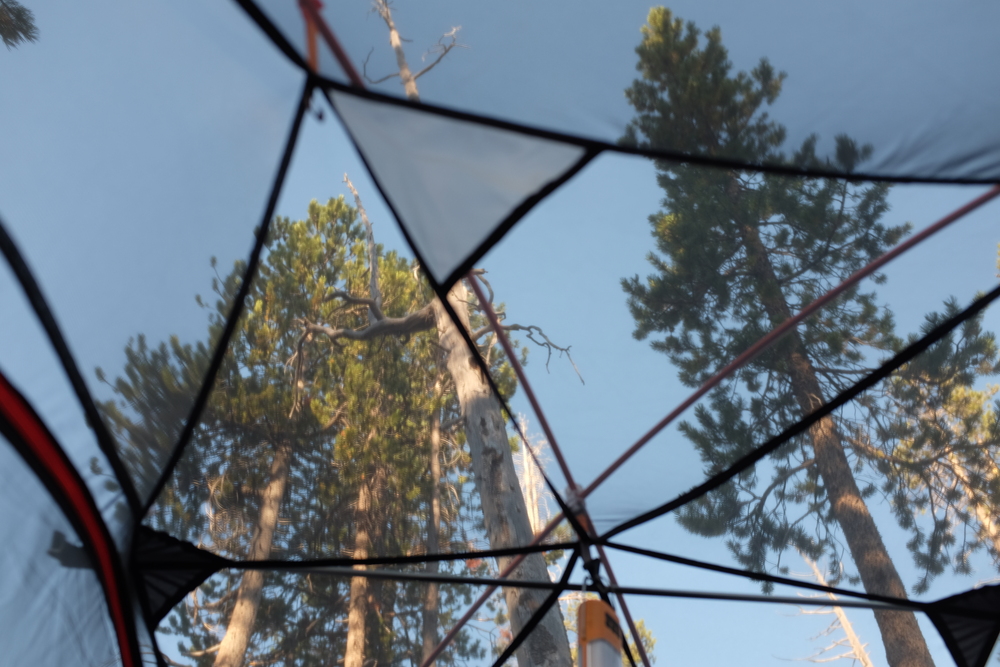
Inspired by my past brewing with foraged plants ( yarrow, mugwort) in lieu of hops, an afternoon vermouth class, and following Pascal Baudar’s photos– everywhere I looked I saw components for beer, gin, or vermouth– such as sap and wild yeast on freshly-opened pine cones:
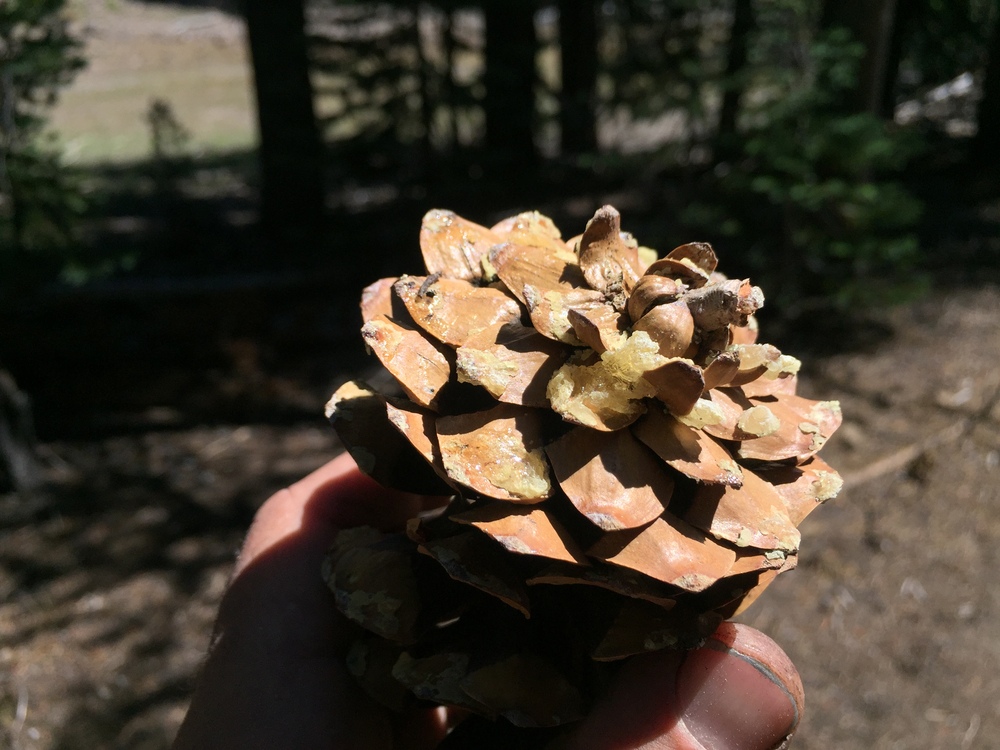
Or juniper branches and berries in gnarled old trees overlooking glacial ponds:

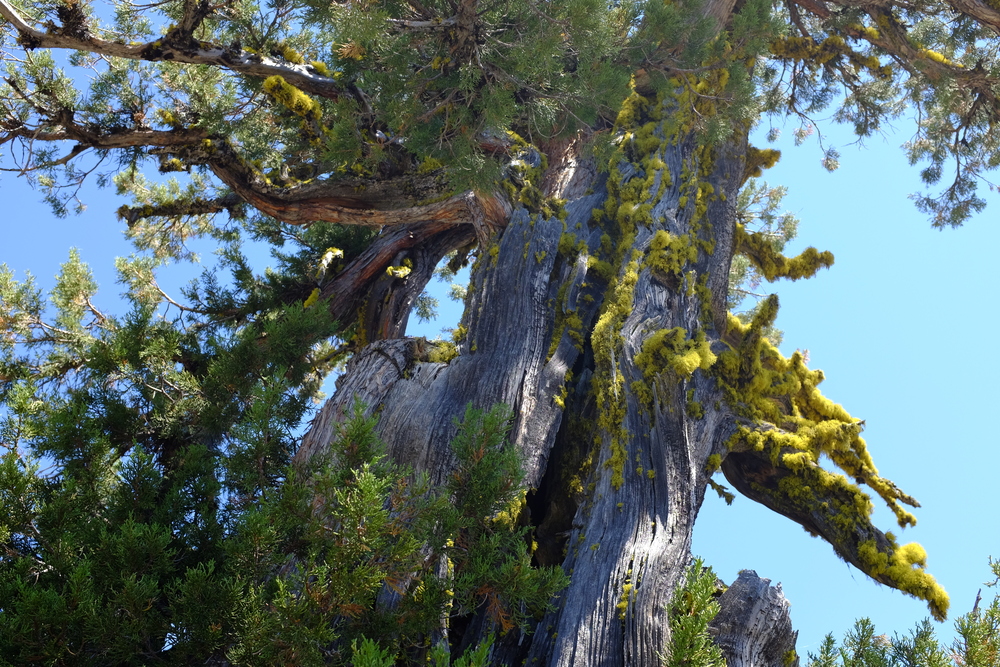 Back home a few days later, I unloaded my foraging bag:
Back home a few days later, I unloaded my foraging bag:
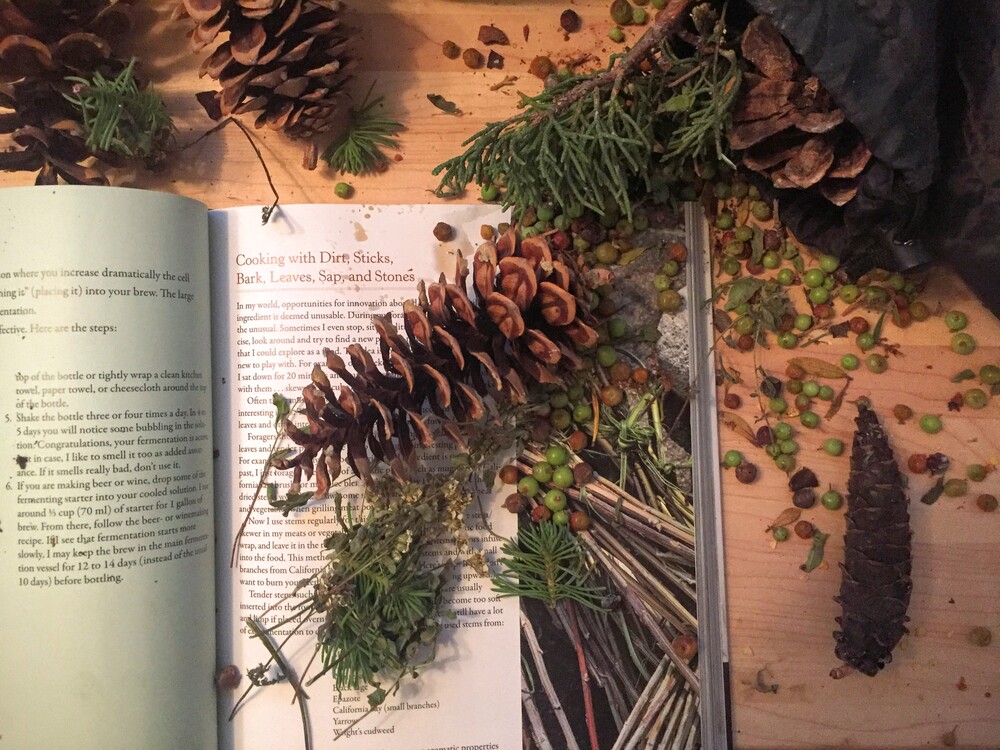
I decided to try to make both a vermouth (more on that in the future) and a gin, using only alcohol and things collected in the woods. Older methods of gin production involve alcohol that’s distilled so the vapor passes through a basket of botanicals (notably including juniper berries) before re-condensing– but not having a still I decided the simpler approach of a cold infusion into a neutral spirit was good enough.
I submerged eight potential components (coyote mint, pine sap, juniper bark and berries, green manzanita berries, fresh pine tips, not-yet-open pine cones, and yarrow flowers) in both jars of vodka and jars of fortified wine (white wine bumped to 19% ABV with brandy, for vermouth):
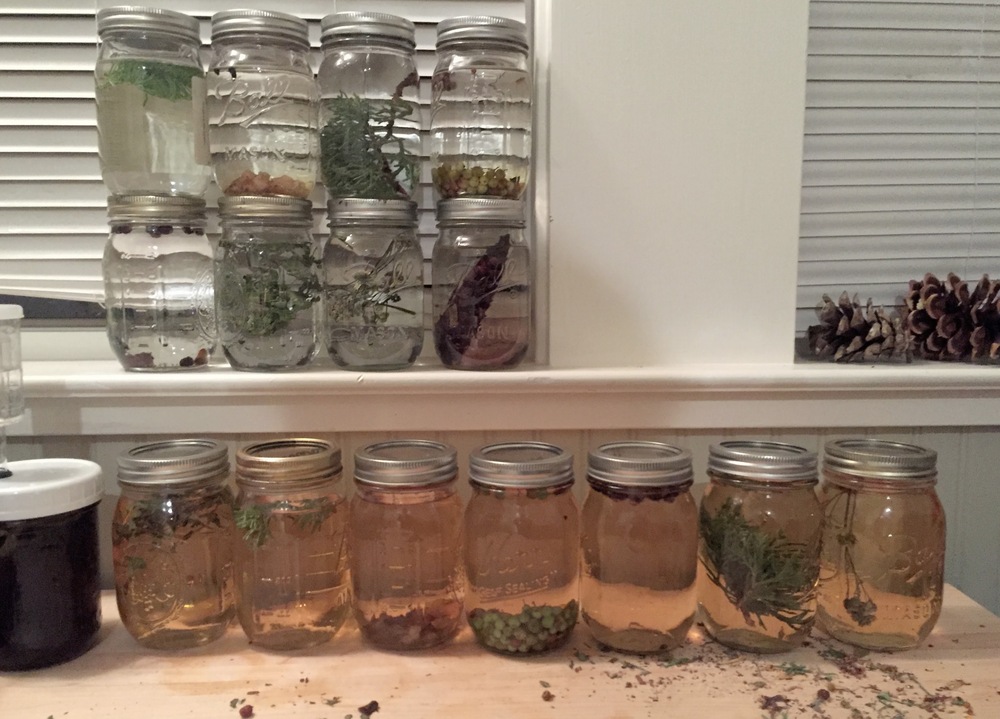
I had no idea what would taste good and what would be distasteful or overly bitter, or how strong a flavor would come from of each component over time, so rather than throwing everything into a jar with vodka and hoping for the best, I decided to infuse each component separately and then blend them to taste later (accepting that I’d throw away some of the vodka from the stronger-tasting components). If I were planning to do this again, I could record the ratio that tasted good and then directly infuse that mix of components– but even then I’d expect every individual pine cone, branch, and handful of berries to be a bit different.
Every few days I smelled and tasted each jar, straining them at anywhere from 3 days to 4 weeks as flavors developed and before they got too bitter. The pine sap smelled and tasted horrible within days so I poured it out, but everything else produced a distinctive and interesting (if sometimes harsh or intense) flavor.
Finally, about three months later, I tasted each of the infused vodkas again side by side. Some had taken on significant color:
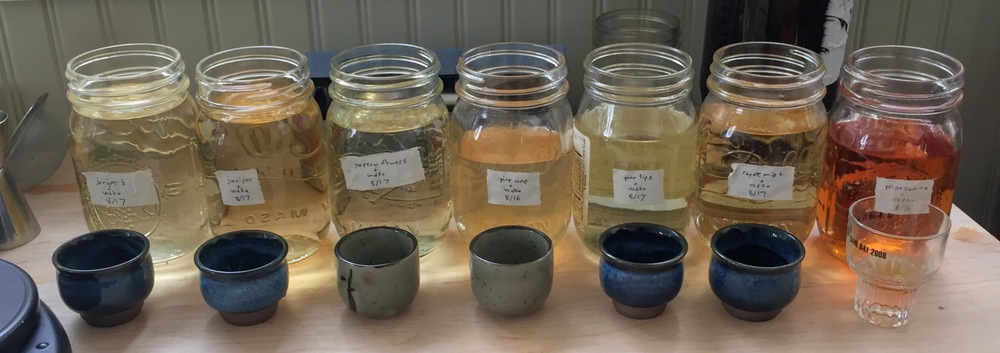
I tried a few different mixtures at thimbleful scale to balance components with powerful aromas and/or tastes, and found a nice ratio that relied heavily on juniper berry and green manzanita berry, with a moderate addition of pine cone, yarrow flowers, and juniper branches, and just a touch of pine needles (harshly pine-y) and coyote mint (a lovely mint but very strongly flavored).
Without a re-distillation step it’s not transparent, but I think this is an attractive bottle of homemade alcohol– and it will always remind me of walking through those woods with a compass:
